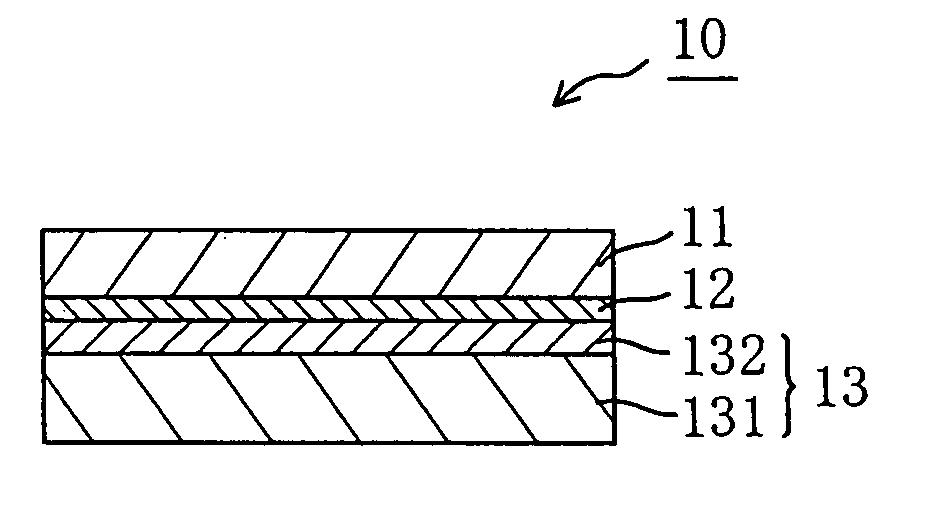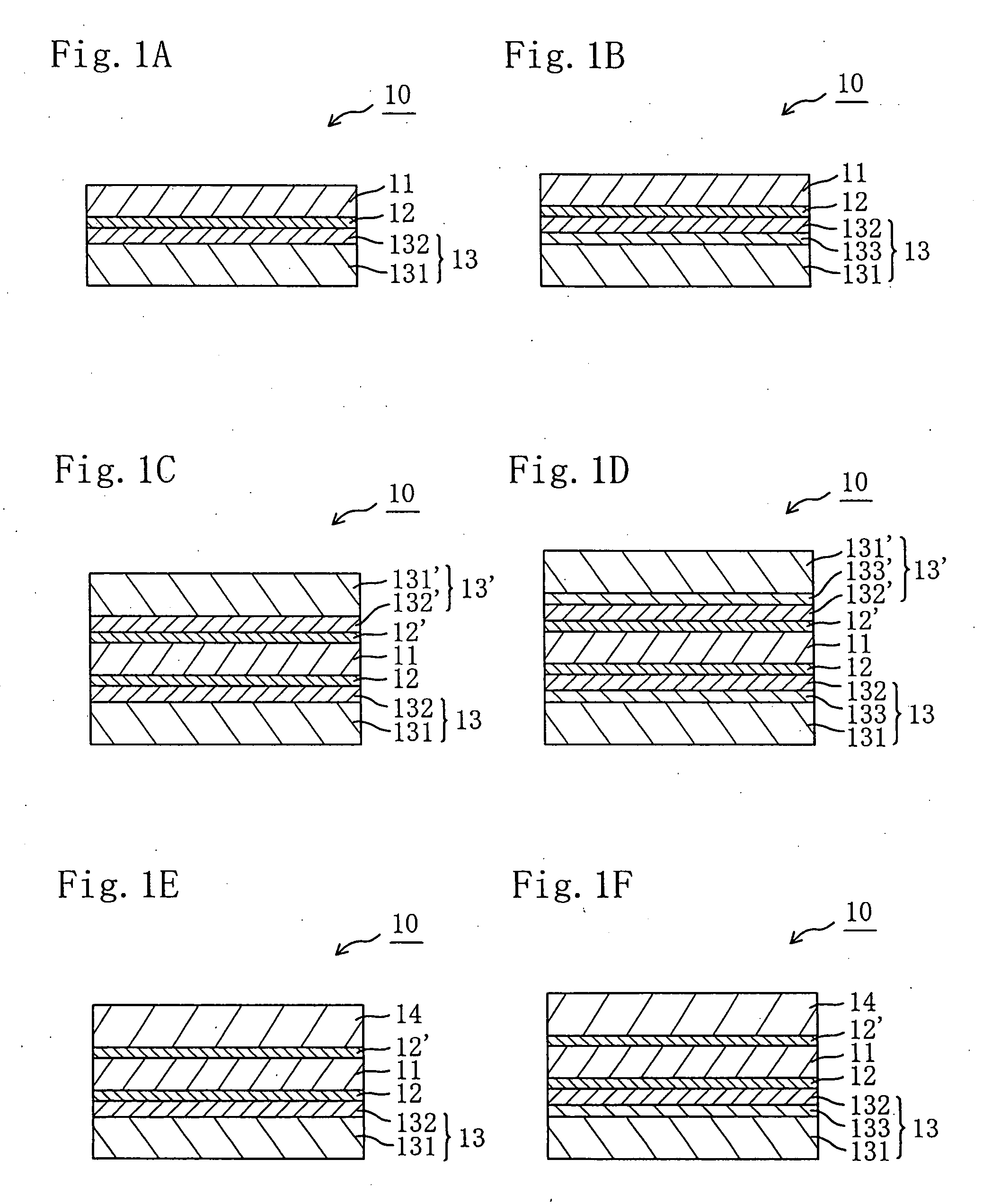Polarizing plate, method of producing a polarizing plate, and liquid crystal panel, liquid crystal television, and liquid crystal display apparatus all using the same
a technology of polarizing plate and polarizing plate, which is applied in the direction of polarizing elements, instruments, optics, etc., can solve the problems of polarizing plate optical properties degrading, polarizing plate prone to shrinkage or deformation, peeling or floating of each laminated film, etc., to prevent changes in retardation values of polyimide layer, prevent damage on the surface of polyimide layer, and high optical properties of polarizer
- Summary
- Abstract
- Description
- Claims
- Application Information
AI Technical Summary
Benefits of technology
Problems solved by technology
Method used
Image
Examples
reference example 1
Polyimide Synthesis
[0219] 17.77 g (40 mmol) of 2,2′-bis(3,4-dicarboxyphenyl)-hexafluoropropane dianhydride and 12.81 g (40 mmol) of 2,2-bis(trifluoromethyl)-4,4′-diaminobiphenyl were charged into a reaction vessel (500 mL) equipped with a mechanical stirrer, a Dean-Stark device, a nitrogen introducing tube, a thermometer, and a cooling tube. Next, a solution prepared by dissolving 2.58 g (20 mmol) of isoquinoline in 275.21 g of m-cresol was added thereto, and the mixture was stirred (600 rpm) at 23° C. for 1 hour, to thereby obtain a homogeneous solution. Next, the reaction vessel was heated by using an oil bath such that inside temperature of the reaction vessel reached 180° C.±3° C., and the solution was stirred for 5 hours while keeping the temperature at 180° C.±3° C., to thereby obtain a yellow solution. The solution was stirred for additional 3 hours, and then heating and stirring were stopped. The solution was left standing to cool to room temperature, and a gel product of ...
reference example 2
Production of Transparent Film
[0221] A commercially available triacetyl cellulose film “FUJITAC UZ” (trade name, available from Fuji Photo Film Co., Ltd.) having a thickness of 80 μm was used. An organic solvent-based dispersion “VYLON UR1700” (trade name, solid content of 30 wt %, available from Toyobo Co., Ltd.) of a thermoplastic resin containing as a main component modified polyester prepared through copolymerization of polyurethane and polyester was applied on a surface of the triacetyl cellulose film in one direction by using a rod coater. The whole was dried in an air circulating thermostatic oven at 130° C.±1° C. for 5 min, to thereby form an anchor coat layer having a thickness of 0.8 μm on one side of the triacetyl cellulose film. The triacetyl cellulose film including the anchor coat layer had Re[590] of 0.2 nm, Rth[590] of 60.1 nm, a light transmittance of 90% measured by using light of a wavelength of 590 nm, and an absolute value of photoelastic coefficient of 1.78×1...
reference example 3
Production of Polarizer
[0222] A polymer film “9P75R” (trade name, thickness of 75 μm, average degree of polymerization of 2,400, degree of saponification of 99.9 mol %, available from Kuraray Co., Ltd.) containing as a main component polyvinyl alcohol was uniaxially stretched 2.5 times by using a roll stretching machine while the polymer film was colored in a coloring bath maintained at 30° C.±3° C. and containing a mixture of iodine and potassium iodide. Next, the polyvinyl alcohol film was uniaxially stretched to a 6 times length of the original length in a bath maintained at 60° C.±3° C. and containing an aqueous solution of a mixture of boric acid and potassium iodide while a crosslinking reaction was performed. The obtained film was dried in an air circulating thermostatic oven at 50° C.±1° C. for 30 min, to thereby obtain a polarizer having a moisture content of 26% and a thickness of 28 μm.
PUM
| Property | Measurement | Unit |
|---|---|---|
| thickness | aaaaa | aaaaa |
| light transmittance | aaaaa | aaaaa |
| thickness direction retardation | aaaaa | aaaaa |
Abstract
Description
Claims
Application Information
 Login to View More
Login to View More - R&D
- Intellectual Property
- Life Sciences
- Materials
- Tech Scout
- Unparalleled Data Quality
- Higher Quality Content
- 60% Fewer Hallucinations
Browse by: Latest US Patents, China's latest patents, Technical Efficacy Thesaurus, Application Domain, Technology Topic, Popular Technical Reports.
© 2025 PatSnap. All rights reserved.Legal|Privacy policy|Modern Slavery Act Transparency Statement|Sitemap|About US| Contact US: help@patsnap.com



